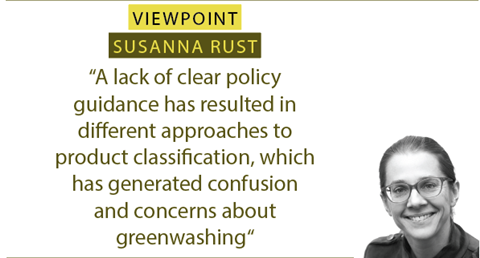On 10 March 2022, the EU’s Sustainable Finance Disclosure Regulation (SFDR) turns one. In terms of how it was drafted and how it has been implemented, it hasn’t exactly covered itself in glory, although it was high time regulators got involved to try to bring some order into ESG-land.

ESMA, the EU securities markets watchdog, has confirmed that it will be working with the European Commission on minimum criteria for investment products classified as Article 8 under the SFDR.
This is a relief.
First of all, because what constitutes an Article 8 product is poorly defined. In SFDR language, it refers to a product that “promotes, among other characteristics, environmental or social characteristics, or a combination of those characteristics, provided that the companies in which the investments are made follow good governance practices”. That’s not very clear, and subsequent comments from the Commission have suggested the bar to triggering an Article 8 classification is potentially quite low.
The point is that a lack of clear policy guidance has resulted in different approaches to product classification, which in turn has generated confusion and concerns about greenwashing.
Other upcoming developments, like detailed product disclosure requirements entering into force, may also help with these problems, but setting minimum criteria would be more effective. Depending on the drafting, of course.
The second reason to welcome ESMA’s work on the minimum criteria issue is simply that the watchdog gives the impression of having built up considerable expertise and understanding with regard to greenwashing.
In its sustainable finance roadmap for 2022-24, it offered a conceptually nuanced account of greenwashing. First, it said that as a general term it has an intuitive meaning, but there is no common understanding of what it is.
It also said that greenwashing could be generally identified as a misrepresentation, mislabelling, mis-selling or mis-pricing phenomenon. ESMA added: “However, these terms may only represent the ultimate symptoms, since the causes of greenwashing may relate to multiple aspects of the functioning of the investment value chain, sometimes affecting nodes of that chain long before a certain financial product reaches the final investor”.
EMSA continued: “Investigating the complex issue of greenwashing, getting to defining its fundamental features and taking coordinated action in multiple sectors to find common solutions – both in the supervisory convergence area and in the single rulebook work – is key to deliver on ESMA’s and [national competent authorities’] mandate to secure investor protection.”
As we know, pension funds are also in the scope of SFDR. It is interesting to note that the Commission plans to address a specific mandate with respect to greenwashing to each of the European Supervisory Authorities (ESAs), which will include EIOPA, the pension fund supervisor. The ESAs will be asked to work on, among other areas, identifying greenwashing practices in the market. It will be interesting to see how EIOPA goes about this and what it finds.
In the meantime, it is encouraging to know that ESMA is on the case.
Susanna Rust, Deputy News Editor
susanna.rust@ipe.com























No comments yet